March 26, 2024
Breathing carefully, I clutched the Costco special edition family-size glass bottle of vodka and extracted 100 milliliters with a miniature glass pipette, which I then transferred into a small amber glass bottle.
Then, with my nine-year-old son’s tiny set of school scissors, I snipped exactly one-tenth of the blotter square of LSD I had ordered from a psychedelic drug website on the dark web the week prior — with a cloaked browser, of course, so the feds didn’t come knocking at my door.
I dropped the LSD into the bottle, gave it a thirty-second shake, and then placed it in the pantry next to my protein powder and creatine. I smiled. Within twenty-four hours, I would be ready to sample my first homemade, volumetric microdose of a drug reported to increase lateral thinking patterns, improve creativity, and massively boost productivity.
Why have I, a strait-laced kid from the backwoods of Idaho, spent time in my kitchen mixing up LSD, psilocybin, ketamine, ibogaine, synthetic DMT tabs, and more — all while my children munch away at their scrambled eggs in the breakfast nook? And why do I, on cognitively demanding days, stir my cup of coffee with a nicotine-coated toothpick, sneak a heaping spoonful of powdered lion’s mane mushrooms into my morning smoothie, or dump a packet of Chinese adaptogenic herbs into the pouches of my cheeks?
It all comes down to my investigation into how you can enhance your mind by combining ancestral wisdom and herbs such as bacopa and ginkgo with modern science and compounds like LSD and racetams.
Words like “nootropics” and “smart drugs” (yes, there is a difference) are quickly becoming household terms, especially due to all the recent media hype about their popularity with everyone from Silicon Valley CEOs to professional athletes to college students, along with the emergence of movies like Limitless and Lucy, popular TV shows such as Wormwood and Hamilton’s Pharmacopeia, and unprecedented titles such as Michael Pollan’s psychedelic exploration book How to Change Your Mind.
Why are these compounds so increasingly rampant?
Think about how much sensory information you have to process each day. From big-city noise pollution to ringing phones, artificial lighting, and chemical-laden air fresheners inundating your senses, to electromagnetic fields piercing your brain, to the complicated new procedure you have to learn at work requiring fierce concentration, the human brain has to organize and cope with massive amounts of information, all while keeping you upright and sane.
The brain does indeed have incredible skills and unimaginable capabilities, but modern living creates unprecedented stress and sensory overload. Sensory overload has even been shown to cause irritability, anxiety, mood swings, depression, ADHD, fibromyalgia, PTSD, and chronic fatigue syndrome. So, maintaining your ability to learn, process information, and form new neural connections is crucial for optimizing brain health, longevity, and, ultimately, boundless energy.
But you don’t have to lock yourself in a dark, quiet room to protect your skull from the onslaught of stimuli. There are research-backed compounds that can amplify cognitive function, help your brain deal with sensory overload, get you through a period of sleep deprivation, and increase your creativity during an intense bout of work or study.
When combined into a variety of different supplement “stacks” and taken in the correct dosage, these compounds — usually referred to as either smart drugs or nootropics (but now also including the category of psychedelics) — can completely change how your brain performs. They do this by impacting receptor sites for neurotransmitters, altering levels of enzymes that break down specific neurotransmitters, changing cell membrane structures and thus controlling the movement of molecules inside and outside of the cell, increasing cerebral perfusion, which improves blood flow to the brain, affecting what is called “biogenic processes,” including neuronal cell creation or “neurogenesis,” and neuroendocrine regulation, regulating hormonal processes of the body specifically related to cognition (see additional studies here, here, here, and here).
In this article, take a deep dive into the world of smart drugs and nootropics. By the time you’re finished reading, you’ll not only know the difference between the two but also know exactly what to take to maximize your brain’s capabilities.
Ready to get started?
Smart Drugs 101
Many people use the terms nootropic and smart drug as if they mean the same thing, but they’re actually very distinct.
A smart drug is any substance that enhances memory, mood, concentration, or another aspect of cognitive function.
Nootropics (the name means “mind director”) target the same functions, but by definition, they must also be neuroprotective and nontoxic, and they are usually derived from natural, non-synthetic sources. 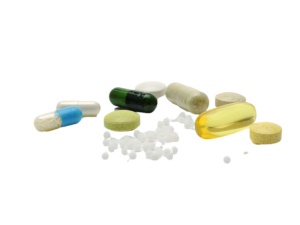
A Belgian pharmacologist named V. Skondia developed a medical definition for nootropics — they are compounds that meet all of the following criteria:
- Have no effects on blood pressure or heart rate
- Have no effects on EEG brain waves
- Can pass through the blood-brain barrier (BBB)
- Have minimal side effects
- Increase metabolism in the brain
- Proven in clinical studies to enhance brain function
Dr. Corneliu E. Giurgea also proposed the following standards that focus more on the positive effects of nootropics. For a supplement to be considered a nootropic, it must do all of the following:
- Enhance learning and memory
- Enhance learned behaviors under conditions known to disrupt them
- Protect the brain from physical or chemical injury
- Enhance the tonic cortical and subcortical control mechanisms in the brain that maintain baseline neural activity levels crucial for regulating functions such as arousal, attention, and sensory processing
- Exhibit few side effects and extremely low toxicity
- Lack the pharmacology of typical psychotropic drugs (such as motor stimulation and sedation)
For example, Adderall is a smart drug that doesn’t qualify as a nootropic under either definition because it is a powerful stimulant that frequently causes negative side effects, such as high blood pressure and heart rate.
There are many smart drugs on the market, the most well-known of which are the psychostimulants Adderall and Ritalin, both of which increase activity in the central nervous system. Other common, similar smart drugs are modafinil, ampakines, and L-deprenyl.
Later in this article, I’ll examine specific nootropics and their uses, but first, let’s look at how each of these smart drugs works and their benefits and potential risks.
Methylphenidate (Ritalin)
Methylphenidate was first used in medicine in 1960 to treat narcolepsy and attention-deficit/hyperactivity disorder (ADHD). It works by inhibiting the reuptake of dopamine and norepinephrine, which causes a flood of dopamine and norepinephrine in your synapses and amplifies the signals sent between neurons.
These effects are similar to those of amphetamines, which are synthetic, addictive, mood-altering stimulants used illegally in sports and legally as prescription drugs to treat children with ADD and adults with narcolepsy. It is incredibly easy to become addicted to methylphenidate. Misuse is shockingly prevalent, with students, biohackers, soccer moms, and busy executives popping it like candy.
Methylphenidate’s side effects include insomnia, stomachache, headache, and anorexia. It’s particularly dangerous for developing brains, such as those of children and adolescents. When methylphenidate is abused or used too frequently in rats, it can negatively impact healthy cognitive development by keeping dopamine levels high. I have never used (nor do I plan to use) this smart drug.
Modafinil (Provigil)
The stimulant modafinil reduces fatigue and sleepiness. The exact mechanism behind its effects is not fully understood, most research indicates that modafinil works by inhibiting reuptake of dopamine, which produces effects similar to those of methylphenidate. It’s also believed that by inhibiting dopamine uptake, more acetylcholine (another neurotransmitter) is released by the hippocampus, which leads to improved cognitive performance, specifically memory.
Modafinil’s risks are also similar to those of methylphenidate. Improper dosing or abuse of the drug may lead to the disrupted development of decision-making abilities and working memory in adolescents, warranting further research into modafinil’s effects.
Modafinil’s effects may also depend upon the IQ of the taker. Two university studies determined that in a test of sustained attention, modafinil only improved cognition in the group with “lower” IQs. Although safer than other stimulants due to its milder effect on neurotransmitter levels, there are still risks associated with any kind of drug that affects dopaminergic neurotransmission.
I keep a small emergency stash of modafinil in my pantry to call upon in the same way that a narcoleptic might use — to keep from falling asleep during a period of intense sleep deprivation. Although I use it only one or two days out of every month, the energy it gives me does not feel natural, the potential for developing dopamine insensitivity concerns me, and I always have to make sure I get extra acetylcholine or choline from supplements and foods such as walnuts and eggs to avoid feeling very irritable when using this smart drug.
Amphetamines (Adderall)
Amphetamines are among the most powerful synthetic, stimulant-class smart drugs available. They work primarily by targeting dopamine, serotonin, and noradrenaline/norepinephrine.
Apart from the risks that accompany drugs with dopaminergic effects, amphetamines, even when used to treat neurological disorders like ADHD, have been known to frequently and predictably cause anorexia, weight loss, and insomnia. High doses can cause psychotic behavior, and even normal doses have been known to produce psychosis that ranges from the loss of short-term memory to horrific visual and auditory hallucinations.
Ampakines (Alzheimer’s Drugs)
Ampakines are derived from the popular nootropic aniracetam, but they’re chemically altered in a way that makes them act more like a smart drug. Their basic function is to activate AMPA glutamate receptors (AMPARs). Glutamate (a neurotransmitter) is the primary mediator of excitatory synaptic transmission in mammalian brains, which makes it crucial for synaptic plasticity (the adaptation of synapses — the space between neurons across which information is sent), learning, and memory. When you activate or stimulate glutamate receptors, you can trigger many of these functions.
Ampakines bind to AMPARs to block the uptake of glutamate, thereby increasing synaptic responses, and this has indeed been shown to minimize the effects of conditions such as Alzheimer’s. Ampakines are also being studied as possible treatments for schizophrenia, depression, ADHD, and more. However, there is a huge risk associated with ampakine consumption. They are now tightly regulated because if you exceed a safe dosage, you will begin to suffer neuronal damage from glutamate toxicity, which leads to some of the very conditions that ampakines are thought to attenuate.
L-deprenyl (Selegiline)
L-deprenyl is used to treat patients newly diagnosed with Parkinson’s, but it’s also one of the darlings of the anti-aging and smart drug communities. Monoamine oxidase inhibitors (MAOIs) like L-deprenyl are considered to be last-resort antidepressants and work by inhibiting the action of monoamine oxidase (MAO), an enzyme found in most tissues that promotes the oxidation and deactivation of monoamine neurotransmitters.
Research suggests that MAO dysfunction is responsible for psychological and neurological disorders like Parkinson’s, schizophrenia, ADHD, addiction, and depression. MAOIs help treat these conditions by lowering the elevated MAO levels.
L-deprenyl’s potential side effects — especially at higher doses — include twitching and uncontrollable repetitive spasms in the tongue, lips, face, arms, and legs, blurred vision, chest pain, difficulty breathing, dizziness, irregular heartbeat, and irritability. In 17 percent of the cases in one study of the drug, the researchers had to stop treatment because of adverse side effects.
The fact is, many of these compounds in small amounts and less frequent use can be relatively safe, but as you’re probably not surprised to hear, I’m not 100% convinced of the overall long-term safety or efficacy of most smart drugs used frequently or in moderate to high dosages for the reasons stated above. I’m personally a bigger fan of several of the natural dopamine-modulating nootropics covered later in this article, including Mucuna pruriens, tryptophan, a good ole cup of coffee, and, yes, even nicotine.
Nootropics 101
Smart drugs are a modern, largely synthetic, and somewhat risky strategy for enhancing cognition. Proceed with caution. On the flip side, I would classify nootropics as the complete opposite: traditional herbs and extracts for cognitive enhancement, derived from ancestral practices and time-honored wisdom.
Sure, it’s possible to swallow too much St. John’s wort or overdose on ginkgo and create the same neurotransmitter imbalances you could create with a synthetic smart drug, but it is far more difficult to harm your nervous system with a nootropic. And while you can get synthetic nootropics, even those are more natural and not as harmful as smart drugs because they don’t alter neurotransmitters, cardiovascular function, or hormones quite as significantly.
Ayurvedic Nootropics
Traditional Indian and Chinese medical practitioners have tapped into the cognition-boosting effects of plants and herbs for at least five thousand years, since long before the first synthetic nootropic was created. Indian Ayurvedic medicine includes a group of nootropic plants called Medhya Rasayana, the four primary plants of which are Mandukaparni, Yashtimadhu, Guduchi, and Shankhpushpi.
Brahmi
One of the most common supplements in Ayurvedic medicine is brahmi (otherwise known as Bacopa, waterhyssop, thyme-leaved gratiola, herb of grace, and Indian pennywort). Brahmi, which is most often called Bacopa, is named after Lord Brahma, the creator god and originator of Ayurveda, and has been used for centuries to treat conditions ranging from pain and inflammation to epilepsy and memory dysfunction.
Bacopa’s exact mechanism of action is not fully understood, but research suggests it promotes antioxidant activity and protects neurons in the prefrontal cortex, hippocampus, and corpus striatum against cytotoxicity (cell death) and DNA damage associated with Alzheimer’s. These parts of the brain control several important functions: the prefrontal cortex is critical for rational, social, and personality behavior. An effective dose of Bacopa ranges from 300 to 450mg per day.
Brain Fuel, a liquid shot by my favorite “all-things-from-bees” resource Beekeeper’s Naturals, is my preferred way to get Bacopa, as it combines Bacopa with beehive-derived royal jelly and ginkgo biloba.
Should you want a more creativity-enhancing experience, you can try Bliss from the nootropics company WUKIYO (use code BEN to save 10%), which is a blend of Bacopa, ashwagandha, reishi, and a microdose of psilocybin, which acts as a serotonin HT2A receptor agonist to increase brain entropy, so all of your neurons talk to each other in a blissful way that lends itself well to creative pursuits or sensory-enhanced adventures such as hiking or snowboarding.
WUKIYO also has a powerhouse product called Apex (use code BEN to save 10%), which is one single tablet that contains several nootropics and smart drugs, along with the ingredient FL-66, which can inhibit the reuptake of dopamine by binding to the dopamine-reuptake pump, thus leading to a focused, feel-good increase in brain dopamine levels.
Ashwagandha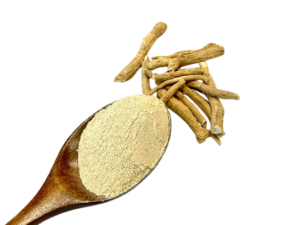
Ashwagandha, also called winter cherry, is another well-known Ayurvedic nootropic that can improve cognitive development, memory, and intelligence and reduce the effects of diseases like Parkinson’s, Huntington’s, and Alzheimer’s. The optimal dose of ashwagandha is two grams taken three times a day, for a total of six grams per day. Like many Ayurvedic herbs, the quality of ashwagandha widely varies, but one good version is KSM-66.
Celastrus paniculatus
Celastrus paniculatus, also known as the “intellect tree,” is one of the more interesting Ayurvedic plants and one that I personally consume in the multi-ingredient supplement Qualia Mind. Traditionally, in India, C. paniculatus is taken in seed form, starting with ten seeds and working up to fifteen and finally twenty seeds.
Malkangni oil, derived from C. paniculatus, is also a good supplement for enhancing your memory and intellectual capacity, improving dream recall, and inducing lucid dreams.
Gingko
One of the most popular and well-known traditional Chinese nootropics is ginkgo, derived from the Chinese maidenhair tree. It is seen as a symbol of longevity and vitality, and research suggests that it can even stimulate the growth of new neurons.
Furthermore, studies show that ginkgo flavonoids, the main constituents of ginkgo extract, are potent antioxidants that have been shown to reduce the effects of Alzheimer’s in mice as well as stabilize and improve the cognitive performance of Alzheimer’s patients for six months to one year.
Effective doses of ginkgo range from 120 to 240mg taken one to four hours before a cognitively demanding task. To reduce age-related cognitive decline, consume 40 to 120mg three times daily.
Polygala tenuifolia
Polygala tenuifolia (yuǎn zhì) is an herb used in traditional Chinese medicine (TCM). As an anti-inflammatory, antidepressant, and anxiolytic, it is traditionally used to improve memory and heal colds and mild respiratory problems. It can help to protect from Alzheimer’s disease, Parkinson’s disease, and other age-related cognitive disorders and promotes the expression of brain-derived neurotrophic factor (BDNF) in the hippocampus, resulting in improved learning and memory.
It can also inhibit the release of cortisol, providing anti-anxiety benefits. This one stacks well with Subroxy®, a flavonoid found in the bark of the Oroxylum indicum tree, which is another interesting compound researched for its role in supporting cognitive well-being, including aspects of learning, focus, and mental acuity, along with increasing levels of brain-derived neurotrophic factor (BDNF) — a protein that plays a crucial role in promoting the survival, growth, and differentiation of neurons (nerve cells) in the brain.
If you want to reap all the benefits of Polygala tenuifolia and Oroxylum indicum, I suggest trying the nootropic blend Notable Focus (use code BEN to save 10%).
DSS
Another traditional Chinese brain booster is Danggui-Shaoyao-San (DSS). Research suggests that DSS can induce angiogenesis (the growth of new blood vessels) and neurogenesis (the growth of new neurons), which makes it a potential treatment in ischemic stroke therapy.
Studies also indicate that DSS also improves free radical-mediated neurological diseases such as Alzheimer’s and Parkinson’s, exhibits anti-inflammatory and antioxidant activities, and reduces cell death in the hippocampus. This promotes better moods, enhanced memory, and more balanced autonomic nervous system function. Currently, there is limited research on proper dosage, but you can learn more about DSS in this fantastic summary article on its interplay with Alzheimer’s.
Vanillin
I absolutely love the musky, sweet smell and flavor of vanilla — but it’s more than simply a flavor enhancer or perfume ingredient. Vanillin, the main component of vanilla (also found in ginger, allspice, capsaicin, and cloves), enhances cognition by boosting dopamine, brain-derived neurotrophic factor (BDNF) which supports the development of neurons, and a similar neuronal support factor, glial-derived neurotrophic factor (GLNF), which aids in the maintenance and survival of neurons.
Vanillin also has potent painkilling and mood-supporting effects and has been used traditionally as a treatment for inflammation, anxiety, and depression. 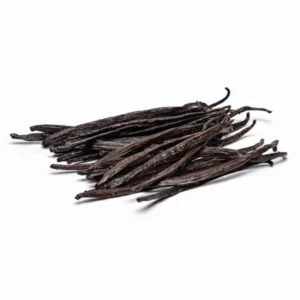
The best way to prepare a vanillin nootropic cocktail is to purchase organic vanilla bean powder and mix it into coffee or tea, or make your own vanilla extract: purchase organic vanilla beans (I prefer Madagascar vanilla beans, which have a rich and full flavor and aroma; avoid the tonka variety, as it can cause both liver damage and significant blood thinning), slice the beans in half, and soak them in vodka for four to six weeks to make your own vanilla tincture. This is far better than purchasing vanilla extract because most store-bought extracts contain artificial flavorings, corn syrup, and caramel color.
Caffeine
Perhaps the most well-known and most widely used natural stimulant and neuroenhancer is — drumroll, please — caffeine. Research suggests that caffeine can prevent memory deficits in experimental models of Alzheimer’s and may even restore memory following impairment. In studies with college students, caffeine was shown to have particularly potent effects on memory improvement when consumed during students’ nonoptimal time of day, early in the morning.
In nature, caffeine is never found in an isolated state, meaning that it is always found in a plant, such as tea leaves or coffee beans, that contains other compounds that enhance caffeine’s effects, including cholesterols, polyphenols, and antioxidants. In fact, one study determined that caffeine alone does not account for the cognition-enhancing benefits of drinking coffee. Rather, the phytochemical content of coffee (which contains over a thousand different natural chemicals!) gives it potent antioxidant and anti-inflammatory properties that complement caffeine’s neuroprotective effects on the central nervous system.
Effective doses of caffeine range from 60 to 100mg, which you can easily get from an 8-ounce cup of joe. A word of caution: Some people are slow caffeine oxidizers, as revealed by a salivary genetic analysis. These individuals carry copies of a gene called COMT that makes them more likely to produce high amounts of (or have reduced turnover rates of) a catecholamine class of neurotransmitters — which includes dopamine, epinephrine, and norepinephrine. For these individuals, a single cup of coffee can bestow some serious jitters, and multiple cups of caffeinated coffee are certainly not advised.
Nicotine
Although cigarettes have rightfully been vilified when it comes to health and longevity, nicotine itself — though best obtained in some way other than sucking it through a cancer stick — has been shown to improve working memory. Research also suggests that oral consumption of nicotine improves memory consolidation during learning by increasing the density and efficiency of nicotinic acetylcholine receptors (nAChRs) in the cholinergic system, the part of the nervous system responsible for memory function.
Studies have shown that while moderate doses of nicotine typically enhance cognition, high doses can inhibit cognitive performance. So when it comes to dosing nicotine, moderation and precision are key. Effective doses range from 2 to 4mg administered over twenty to thirty minutes, a dose easily available in the form of nicotine gum or spray.
While I am not a fan of the artificial sweeteners they contain, I keep a small stash of 2–4mg nicotine gum in my fanny pack for occasional use. The Rugby Transdermal Patch by GSK is also handy, and when slapped on the lower right side of the abdomen, it can even assist with constipation by stimulating the vagus nerve and increasing bowel motility.
Finally, in a podcast with Jonathan Otto, we discuss how nicotine can block pesticides, herbicides, vaccine adjuvants, and other toxins from attaching to cell receptors.
To enhance physical performance, consume 100mg or more of caffeine and 2.5mg or more of nicotine. If you do struggle with nicotine addiction, black pepper extract or essential oil can quell the cravings, especially the use of a special chemical-free inhalation device called the FUM (think vaping, without the vaping).
Health Vaping 101
One nifty trick I learned from health pioneer Paul Chek is that using a vaporizer in a nontraditional way can give you a dose of uplifting nicotine from organic tobacco and also provide a lung-based delivery for a host of compounds for either stimulation and relaxation, depending on the blend you pick.
For example, one pick-me-up blend I use in the Da Buddha vaporizer that sits on my desk combines organic tobacco, dried and ground green tea leaves, and a couple of drops of cinnamon oil or frankincense. For a more relaxing blend, I’ll use an indica cannabis strain, dried and ground chamomile tea leaves, and a small sprinkling of lavender essential oil. It’s fun to come up with your own recipes, but here are a few ideas to get your brain spinning:
- Peppermint leaves or oil, which improves blood circulation, raises alertness, and clears the lungs and respiratory passages
- Gotu kola leaves or extract, which sharpens memory and concentration
- Skullcap or hops, which act as mild sedatives and have a calming effect. (Skullcap is also good for headaches, which makes me wonder if that’s why it’s named that.)
- Wild oats, which reduce mental tension and anxiety
- Cloves, which reduce food cravings
- Primrose, which helps heal lung damage from smoking
- Chamomile, which acts as an antidepressant and promotes relaxation and sleep
- Ginger root, which is good for indigestion or stomach cramps, and makes a good digestif before meals
- Marijuana — indica strain for relaxation, sativa strain as a pick-me-up
Whatever you choose, be sure to select herbicide- and pesticide-free leaves and plants. I recommend the Da Buddha vaporizer or the Volcano because they offer a variety of temperature settings for the strains and blends that you choose (Paul Chek uses the Volcano).
Cannabidiol
Cannabidiol, or CBD, makes up about 40 percent of a cannabis plant. Unlike THC, the compound that produces psychoactive effects and is most often associated with the effects of marijuana, CBD contains potent medicinal properties that do not lead to a high or paranoia. CBD has been shown to enhance focus, creativity, and mood and reduce general anxiety, social anxiety, chronic pain, stress, ADHD, insomnia, headaches, and inflammation.
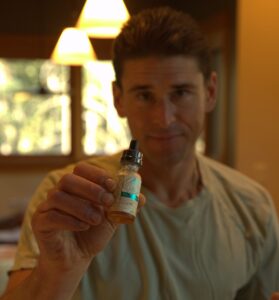 Since CBD doesn’t get you high and has far less addictive potential than THC, you can function quite well, reduce anxiety, maintain focus, and sleep better when consuming small daily amounts of CBD. But there is one caveat: CBD is not highly absorbable and needs to be blended with compounds such as curcuminoids or rendered more bioavailable for oral absorption. This means the most effective delivery mechanisms are vaping, a sublingual oil, or a capsule that has been blended with turmeric extracts.
Since CBD doesn’t get you high and has far less addictive potential than THC, you can function quite well, reduce anxiety, maintain focus, and sleep better when consuming small daily amounts of CBD. But there is one caveat: CBD is not highly absorbable and needs to be blended with compounds such as curcuminoids or rendered more bioavailable for oral absorption. This means the most effective delivery mechanisms are vaping, a sublingual oil, or a capsule that has been blended with turmeric extracts.
An effective dose of CBD begins at 10mg. If you combine it with THC, blend it in a ratio of ten parts CBD to one part THC, or five parts CBD to one part THC (for example, 10mg of CBD and 1mg of THC). I have personally found 10 to 20mg of CBD to help manage anxiety and stress and boost focus. Higher doses of between 30 and 40mg can help you fall asleep more easily.
I’m a fan of Element Health’s full-spectrum oil or the Rise Caps by CURED Nutrition, which feature a blend that’s formulated with a concentrated dose of CBD and a low dose of THC.
Traditional Nootropics from Around the World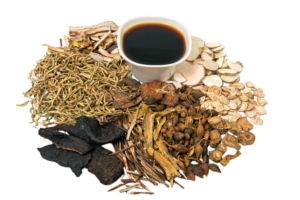
Much to the chagrin of folks who argue that our ancestors never would have taken a supplement, especially one that affects cognition, the fact is many ancestral populations around the world have used nootropic plants for millennia. Below are some examples:
Maca
Maca root has been used by indigenous Andean groups in South America for thousands of years. It is used to improve sexual function, memory, and learning as well as to reduce the effects of osteoporosis. Effective doses range from 1,500 to 3,000mg.
Yerba Mate
Yerba mate is a tea made from a plant of the holly family (similar to mistletoe) and is consumed by many tribes across South America. It has been shown to improve cholesterol levels, protect the liver, and stimulate greater central nervous system activity. Effective doses range from 990 milliliters to 1.5 liters of tea per day.
Green Tea
Green tea is widely consumed in many cultures, especially in Asia, and is known to have potent health benefits due to its polyphenol content, especially the flavanols and flavonols. In cell cultures and animal studies, the polyphenols in green tea have prevented neurotoxin-induced cell injury. Green tea also has anti-inflammatory properties and, according to a study performed on mice, may delay age-related memory loss.
It is safe to drink several cups of green tea per day, but it may be more efficient to take a green tea extract supplement to reach a daily dose of 400 to 500mg of epigallocatechin gallate (EGCG), the primary active component of green tea.
Black Ant Extract
Black ant extract is another fascinating nootropic. Powdered extract from the Polyrhachis ant is an ancient Chinese tonic derived from ants that live high in the mountains, often found among ginseng roots. This stuff has been named the “herb of kings,” and for good reason: it contains a surprising amount of amino acids, vitamins, minerals, and antioxidants.
In addition to containing high amounts of ATP, research shows it also acts to modulate the immune system, build stress resistance, and even provide high amounts of ecdysterone, a growth hormone in insects that can have anabolic, muscle-building effects. Black ant extract is also extremely high in zinc, a mineral vital for muscle contractions, cellular growth and division, vision, the immune system, and libido.
In my own personal experimentation with small amounts (½ to 1 teaspoon) of black ant extract, I’ve found it to be a perfect pre-workout energy boost that also gives about four to five hours of focused energy and mental performance.
Lion’s Mane
This is one of my favorites. Also known as the hedgehog mushroom, lion’s mane is an edible fungus with a long history of use in traditional Chinese medicine. It is particularly rich in β-glucan polysaccharides, which are responsible for the neuroprotective and cognition-enhancing properties of this mushroom.
Lion’s mane increases nerve growth factor levels, which causes enhanced neuronal growth, neuron regeneration, and synaptic plasticity. It can also improve myelination, resulting in enhanced neuronal communication and nerve regeneration, improve memory, decrease neuronal excitability and excitotoxicity, protect neurons from inflammatory damage, and even reduce anxiety and stress. In clinical studies evaluating the effects of lion’s mane on cognitive function, dosages from 750mg up to as much as 5g per day have been used.
Synthetic Nootropics
The realm of natural nootropics is accompanied by a family of synthetic nootropics not found in nature but synthesized in a laboratory, called racetams, which includes piracetam, aniracetam, oxiracetam, phenylpiracetam, and the anticonvulsant drugs levetiracetam and seletracetam.
Most racetams act upon central nervous system receptors, neurotransmitters, the AMPA receptors responsible for fast synaptic transmission, and muscarinic receptors (interestingly, this is the same excitatory receptor that the fringe nootropic black ant extract acts upon).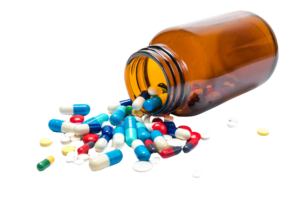
Piracetam
Piracetam, one of the more popular racetams, directly enhances learning, memory, and attention, and it can, with no observed adverse side effects, restore cognitive performance in patients who have suffered cranial trauma, inflammation, strokes, and ischemic complications (loss of blood flow to a region) following coronary bypass surgery. It can also improve symptoms of delirium and reduce depression and anxiety. In adults, the standard dose of piracetam ranges from 1,200 to 4,800mg divided into three smaller doses throughout the day.
Aniracetam
Aniracetam has been shown to protect cells from the effects of glutamate excitotoxicity, resulting in an overall neuroprotective effect. While you may not be shoveling mouthfuls of glutamate down your hatch or eating cartons of MSG-laden Chinese food each night, aniracetam can help protect your brain from inflammation caused by other central nervous system irritants, such as herbicides, pesticides, and rancid oils. Effective doses of aniracetam range from a single 400mg dose to two doses of 500 to 750mg per day, taken with meals.
Noopept
The neuroprotector noopept can improve memory and attention and reduce depression and anxiety. Noopept acts similarly to racetams to improve overall brain function. Effective doses range from 10 to 30mg per day.
Phenylethylamine
Phenylethylamine can improve mood and increase attention and concentration. Known as the “love drug,” it has also been shown to heighten feelings of arousal, excitement, and euphoria. There is little research that indicates an effective dose, but recommendations range from 300 to 1,000mg per day.
Uridine monophosphate
Uridine monophosphate enhances learning, memory, and overall cognitive function. Effective doses range from 500 to 1,000mg per day.
Phosphatidylserine
Phosphatidylserine naturally occurs in high concentrations in the brain and has been shown to reduce stress, cortisol levels, and physical fatigue; improve ADHD and forgetfulness; and increase mental processing and memory. An effective dose is 100mg taken three times daily, but anything over that may lead to adverse side effects such as insomnia.
Hordenine
Hordenine occurs in high amounts in plants, such as barley grass, and is known to help burn fat, improve metabolism, and increase energy, alertness, and concentration. There is insufficient evidence to make any claim about dosage, but most supplements contain 30mg to be taken two or three times daily.
Vinpocetine
Vinpocetine protects the brain against toxins, increases blood flow to the brain, lowers inflammation, reduces fatigue, and increases attention, memory, and alertness. Effective doses range from 15 to 60mg per day, best split up into separate dosages and taken three times per day, preferably with meals.
Paraxanthine
Paraxanthine is a natural metabolite of caffeine that’s been engineered to enhance cognitive function and athletic performance without the pesky side effects such as jitters, sleep disruption, or withdrawals that come with consuming too much caffeine. As a nootropic, it’s useful for improving memory, focus, and overall mental performance.
By blocking adenosine receptors, paraxanthine can increase levels of other neurotransmitters, such as dopamine and norepinephrine, leading to improved alertness and wakefulness. Yet, oddly, I can personally use paraxanthine before, say, an evening workout, and sleep just fine afterward.
Most of these effects kick in at about 200-400mg of paraxanthine. My preferred delivery method is the Update energy drink, which blends paraxanthine with a stack of nootropics including N-acetyl, L-tyrosine, taurine, alpha-GPC, L-theanine, 5-HTP, and vitamin B12.
Methylene Blue
More commonly known as “fish tank cleaner,” methylene blue can be a potent mitochondria booster and cognitive enhancer —assuming you take a pharmaceutical-grade version free of impurities like arsenic, aluminum, cadmium, mercury, and lead.
Warning: unless you use a dropper bottle and place the dropper at the base of the tongue, chased by a glass of water, it will turn your mouth Smurf blue for hours, though swishing your mouth with baking soda can help remove the blue stains more quickly. It can also irreversibly stain anything that it comes into contact with unless you clean it up quickly with an alcohol-based sanitizer before it is absorbed into a surface.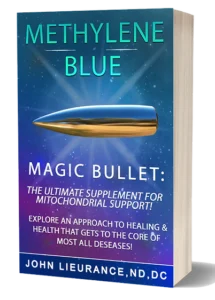
Methylene blue has been used to treat Alzheimer’s, Huntington’s, Parkinson’s, and dementia, to prevent amyloid plaque buildup in the brain, to restore mitochondrial function, and to act as a powerful antiviral and potential treatment for Lyme disease.
Effective doses range from 1 to 4mg per kilogram of body weight, but more is not better, since excess use can lead to high levels of free radicals, oxidation, and inflammation. I suggest 0.5–1 mg per kilogram of body weight per day, two to four days per week.
In his book, Magic Bullet, Dr. John Lieurance, who has been a guest on my podcast here, here, here, and here, describes how his clinic utilizes methylene blue IVs and suppositories, often combined with red light therapy and hyperbaric oxygen (HBOT), a tactic I, and many other biohackers, have adopted at home with oral methylene blue supplementation.
A few good brands include Dr. Lieurance’s MitoZen products, Troscriptions under-tongue troches, and the BioBlue liquid dropper. Because methylene blue, and, similarly, dark black shilajit or a greenish blue phycocyanin like spirulina or chlorella, can interact with photons of red light to help the body produce more ATP, any of these compounds are fantastic for mental energy when paired with an infrared sauna, red- light therapy, or even a walk in the sunlight.
Finally, refrain from using methylene blue if you have G6PD deficiency, kidney or liver issues, or low blood pressure, and be cautious and consult with a healthcare professional if you are on medications that increase serotonin levels, like MAOIs and SSRIs, as combining them with methylene blue can lead to a potentially fatal condition called serotonin syndrome.
Summary and What’s Next
That wraps up my deep dive into the world of smart drugs and nootropics — the tools I leverage to sharpen my mind, sleep more soundly, enhance my creativity, and deepen my connection to the world around me.
But hold onto your hat, because this journey isn’t over yet. In part two of this series, I kick things up a notch. I’ll be pulling back the curtain on how to synergize these powerful substances to unlock even greater benefits (go ahead and get ready to have all your burning questions about microdosing answered — half of the article is dedicated to this topic!).
Stay tuned, because you don’t just want to throw a bunch of smart drugs together (or accidentally turn your microdose into a macrodose) and hope for the best. I’ll help you craft a deliberate, intelligent approach to biohacking your brain. Whether you’re looking to boost your productivity, enhance your meditation practice, or simply stay sharp in a world that constantly demands your best, I’ve got you covered.
Oh, one more thing…
I’ve put together Ben Greenfield’s Brain Boost Blueprint, a comprehensive guide filled with all my most recommended biohacks aimed at protecting and optimizing your brain. Plus, it’s packed with exclusive discounts!
Best of all, it’s completely free — no email required. Simply click here to access it now.
